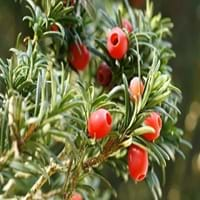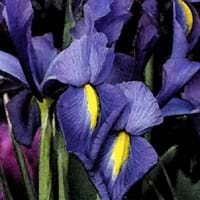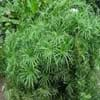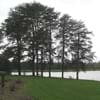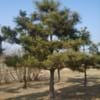Life Span
Perennial
Perennial
Type
Needled or Scaled Evergreen
Herbaceous Perennial
Origin
Eastern Asia
Hybrid origin
Types
Not Available
Not Available
Habitat
Dappled Shade, Shady Edge, Woodland Garden Secondary, Woodlands
meadows, Riverbanks, Rocky Mountains
USDA Hardiness Zone
4-7
5-9
Sunset Zone
A2, A3, 2a, 2b, 3a, 3b, 4, 5, 14, 15, 16, 17
2b, 3a, 3b, 4, 5, 6, 7, 8, 9, 10, 11, 12, 13, 14, 15, 16, 17, 18, 19, 20, 21, 22, 23, 24
Habit
Upright/Erect
Clump-Forming
Flower Color
Non Flowering Plant
White, Yellow, Blue, Purple, Orange, Pink, Rose, Coral, Peach, Burgundy, Lavender, Plum, Orange Red, Dark Salmon, Bronze, Chocolate, Black
Flower Color Modifier
Bicolor
Bicolor
Fruit Color
Red
Not Available
Leaf Color in Spring
Dark Green
Green, Light Green, Gray Green
Leaf Color in Summer
Dark Green
Yellow green
Leaf Color in Fall
Dark Green
Not Available
Leaf Color in Winter
Dark Green, Bronze
Light Green
Leaf Shape
Pinnate
Sword-like
Plant Season
Spring, Summer, Fall, Winter
Spring
Sunlight
Full Sun, Partial Sun, Partial shade, Full Shade
Full Sun, Partial Sun
Type of Soil
Loam
Clay, Loam, Sand
The pH of Soil
Acidic, Neutral, Alkaline
Acidic, Neutral, Alkaline
Soil Drainage
Well drained
Well drained
Bloom Time
Fall, Spring, Summer, Winter
Early Spring, Spring, Late Spring
Tolerances
Drought
Drought
Where to Plant?
Ground
Ground
How to Plant?
Stem Cutting, stem tip cuttings, Tip cutting
Root Plants
Plant Maintenance
Medium
Medium
Watering Requirements
Average Water Needs, Do Not over Water, Do not water frequently
Average Water Needs
In Summer
Lots of watering
Lots of watering
In Spring
Moderate
Moderate
In Winter
Average Water
Average Water
Soil pH
Acidic, Neutral, Alkaline
Acidic, Neutral, Alkaline
Soil Type
Loam
Clay, Loam, Sand
Soil Drainage Capacity
Well drained
Well drained
Sun Exposure
Full Sun, Partial Sun, Partial shade, Full Shade
Full Sun, Partial Sun
Pruning
Remove damaged leaves, Remove dead branches, Remove dead leaves
Remove damaged leaves, Remove dead branches, Remove dead leaves
Fertilizers
All-Purpose Liquid Fertilizer
All-Purpose Liquid Fertilizer
Pests and Diseases
Red blotch
Bacteria, fungus, Viruses
Plant Tolerance
Drought
Drought
Flower Petal Number
Single
Single
Foliage Texture
Fine
Fine
Foliage Sheen
Not Available
Matte
Attracts
Aphids, Mealybugs, White Pine Weevil
Butterflies, Hummingbirds
Allergy
Pollen
Not Available
Aesthetic Uses
Bonsai, Borders
Beautification, Showy Purposes
Beauty Benefits
Not Available
Not Available
Environmental Uses
Air purification
Air purification
Medicinal Uses
anti-cancer
Not Available
Part of Plant Used
Fruits, Wood
Flowers, Root
Other Uses
Used as a dye, Wood is used for making furniture
Basketary, Used for fragrance
Used As Indoor Plant
No
No
Used As Outdoor Plant
Yes
Yes
Garden Design
Feature Plant, Foundation, Groundcover, Hedges, Screening, Wind Break, Topiary, Bonsai, Espalier
Cutflower, Foundation, Mixed Border, Rock Garden, Wall
Botanical Name
TAXUS cuspidata
IRIS 'Apollo'
Common Name
spreading yew
Carmen Iris, Dutch Iris
In Hindi
Japanese Yew
Dutch Iris
In German
japanische Eibe
Dutch Iris
In French
Japanese Yew
Dutch Iris
In Spanish
tejo japonés
Dutch Iris
In Greek
Ιαπωνικά Yew
Dutch Iris
In Portuguese
Xapanese Filho
Dutch Iris
In Polish
Xapanese Son
Dutch Iris
In Latin
Filius Xapanese
Dutch Iris
Phylum
Tracheophyta
Magnoliophyta
Class
Pinopsida
Magnoliopsida
Order
Pinales
Asparagales
Family
Taxaceae
Iridaceae
Clade
Not Available
Angiosperms, Monocots
Tribe
Not Available
Irideae
Subfamily
Not Available
Iridoideae
Number of Species
Not Available
Season and Care of Japanese Yew and Dutch Iris
Season and care of Japanese Yew and Dutch Iris is important to know. While considering everything about Japanese Yew and Dutch Iris Care, growing season is an essential factor. Japanese Yew season is Spring, Summer, Fall and Winter and Dutch Iris season is Spring, Summer, Fall and Winter. The type of soil for Japanese Yew is Loam and for Dutch Iris is Clay, Loam, Sand while the PH of soil for Japanese Yew is Acidic, Neutral, Alkaline and for Dutch Iris is Acidic, Neutral, Alkaline.
Japanese Yew and Dutch Iris Physical Information
Japanese Yew and Dutch Iris physical information is very important for comparison. Japanese Yew height is 90.00 cm and width 150.00 cm whereas Dutch Iris height is 25.40 cm and width 12.70 cm. The color specification of Japanese Yew and Dutch Iris are as follows:
Japanese Yew flower color: Non Flowering Plant
Japanese Yew leaf color: Dark Green
Dutch Iris flower color: White, Yellow, Blue, Purple, Orange, Pink, Rose, Coral, Peach, Burgundy, Lavender, Plum, Orange Red, Dark Salmon, Bronze, Chocolate and Black
- Dutch Iris leaf color: Green, Light Green and Gray Green
Care of Japanese Yew and Dutch Iris
Care of Japanese Yew and Dutch Iris include pruning, fertilizers, watering etc. Japanese Yew pruning is done Remove damaged leaves, Remove dead branches and Remove dead leaves and Dutch Iris pruning is done Remove damaged leaves, Remove dead branches and Remove dead leaves. In summer Japanese Yew needs Lots of watering and in winter, it needs Average Water. Whereas, in summer Dutch Iris needs Lots of watering and in winter, it needs Average Water.
